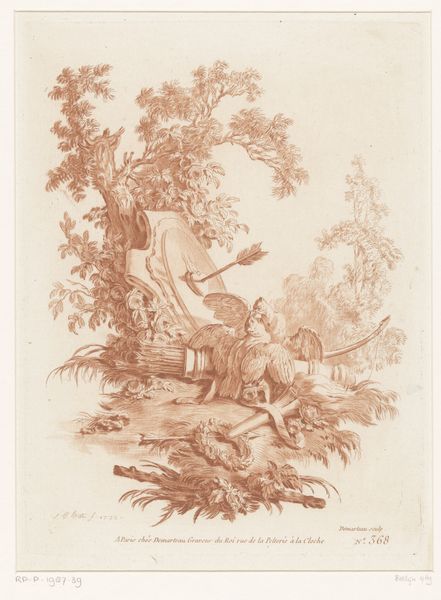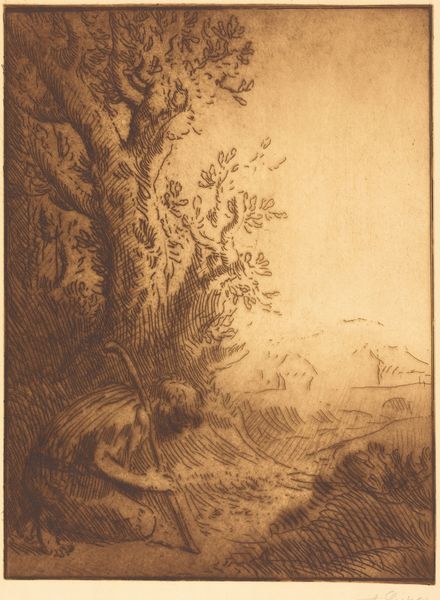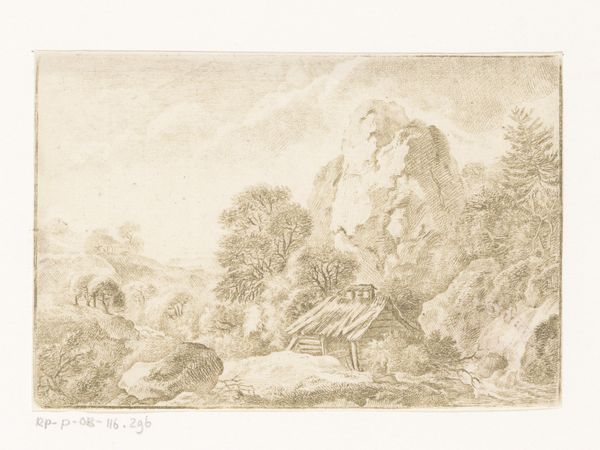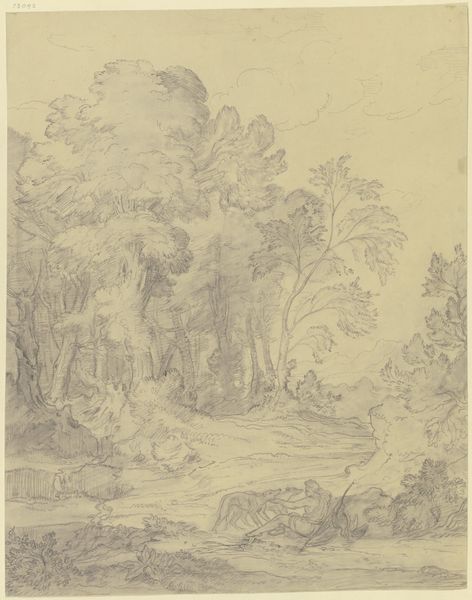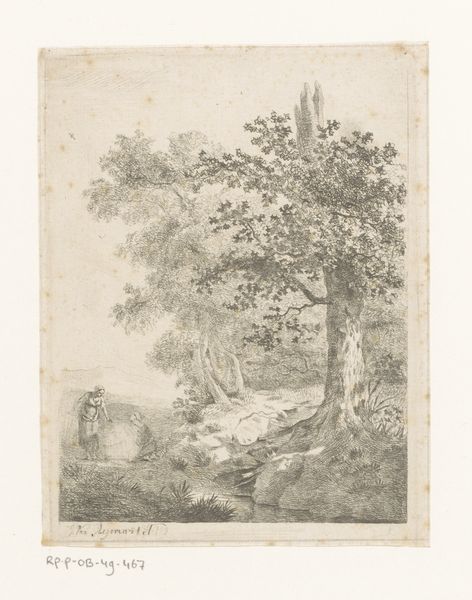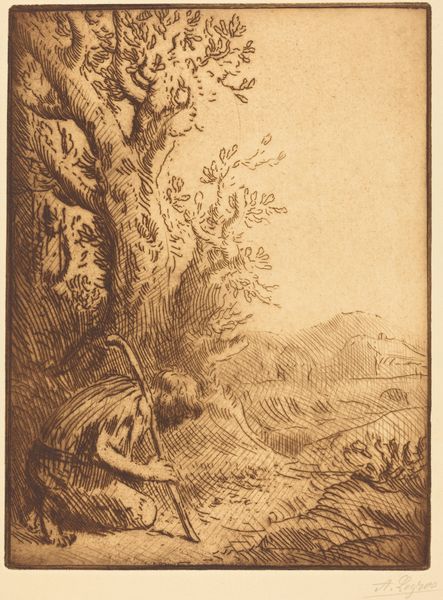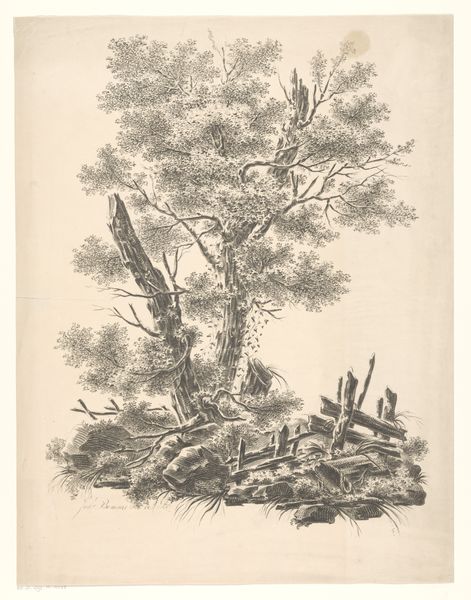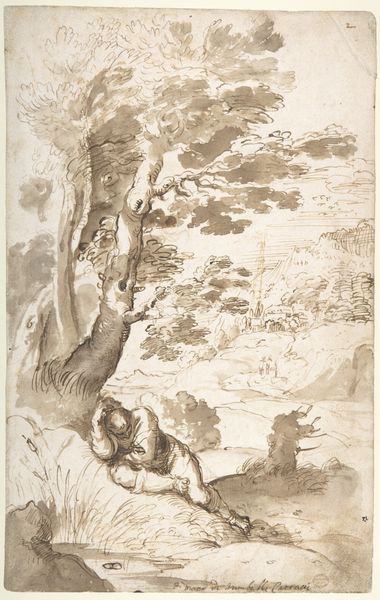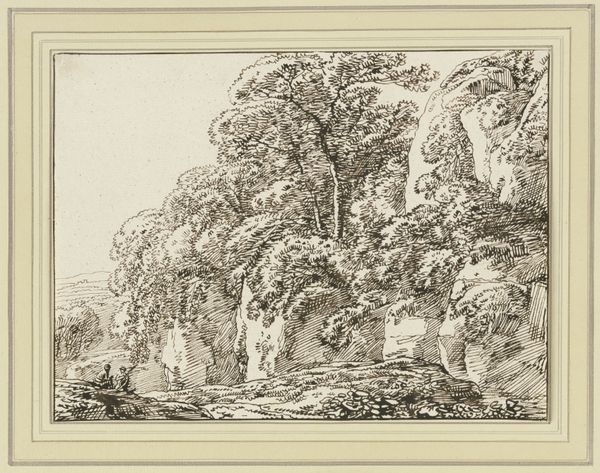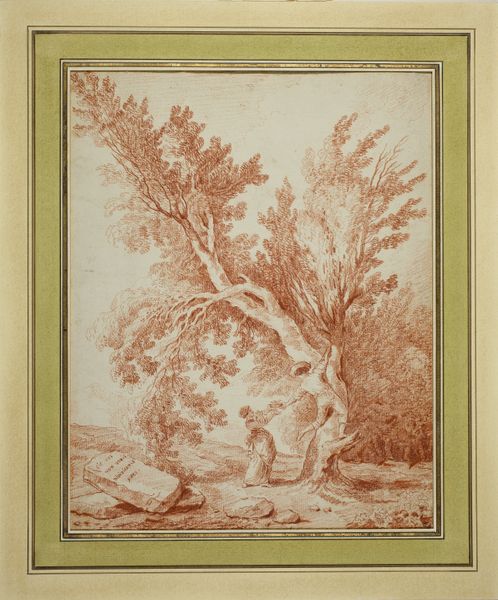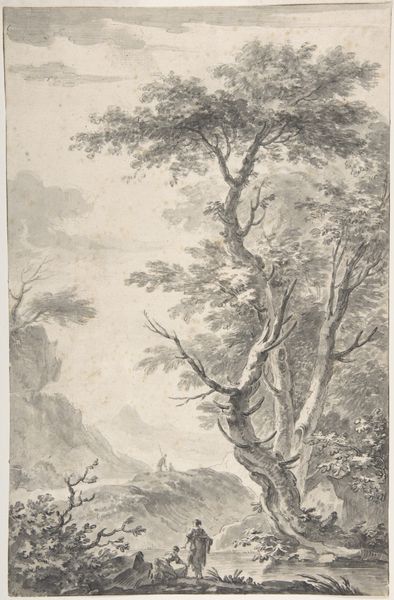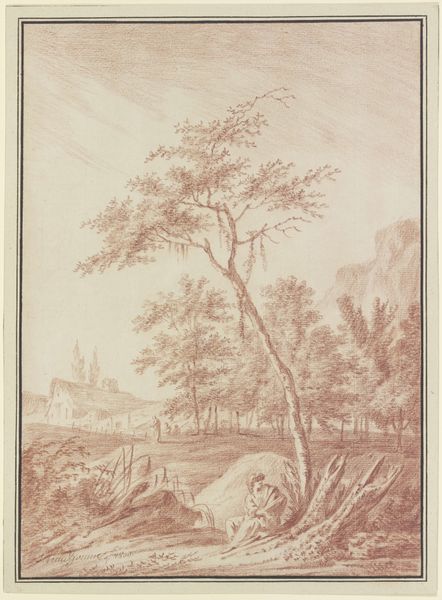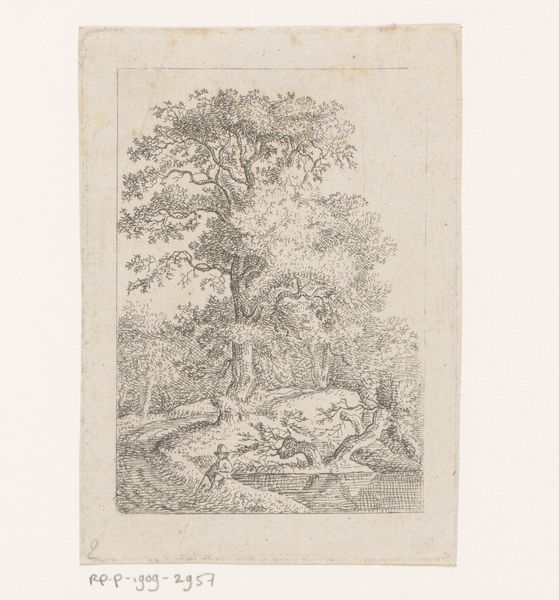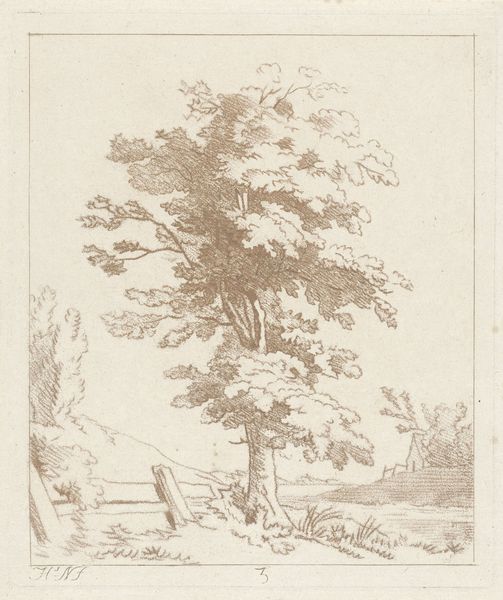
Dimensions: height 260 mm, width 202 mm
Copyright: Rijks Museum: Open Domain
Editor: Here we have Gilles Demarteau's "Landschap met hond en schaap," made in 1772. It’s an etching rendered in warm sepia tones. I'm struck by how the idyllic scene, with its dog and sheep, feels both intimate and meticulously crafted. What draws your attention in this work? Curator: Immediately, I consider the etching process. The labor involved in creating this image through such a medium, where lines are incised into a metal plate and then printed, elevates it beyond a simple depiction of the countryside. Demarteau wasn't just representing a landscape; he was engaging with a whole system of artistic production and, crucially, with an emerging consumer market for such prints. How do you think this material process affects our understanding of the image itself? Editor: That's interesting! Knowing it's an etching does make me think about reproducibility and dissemination. Was he trying to democratize art in some way, making scenes like this accessible to a broader audience beyond the wealthy elite? Curator: Precisely. The availability of such images hints at shifting social structures and access to visual culture. This Rococo landscape, once perhaps confined to the walls of an aristocratic estate, could now be enjoyed, and even consumed, by a rising middle class. This intersection of art, labor, and commerce is a potent element of the piece. Do you see that interplay influencing the artistic choices made in this etching? Editor: I see what you mean. Thinking about it now, the detail seems less about capturing a 'true' landscape and more about creating a desirable commodity. I hadn’t considered that production and material could tell us so much. Curator: Exactly! Understanding the “how” helps us to better understand the “why” and for whom the art was intended.
Comments
No comments
Be the first to comment and join the conversation on the ultimate creative platform.
